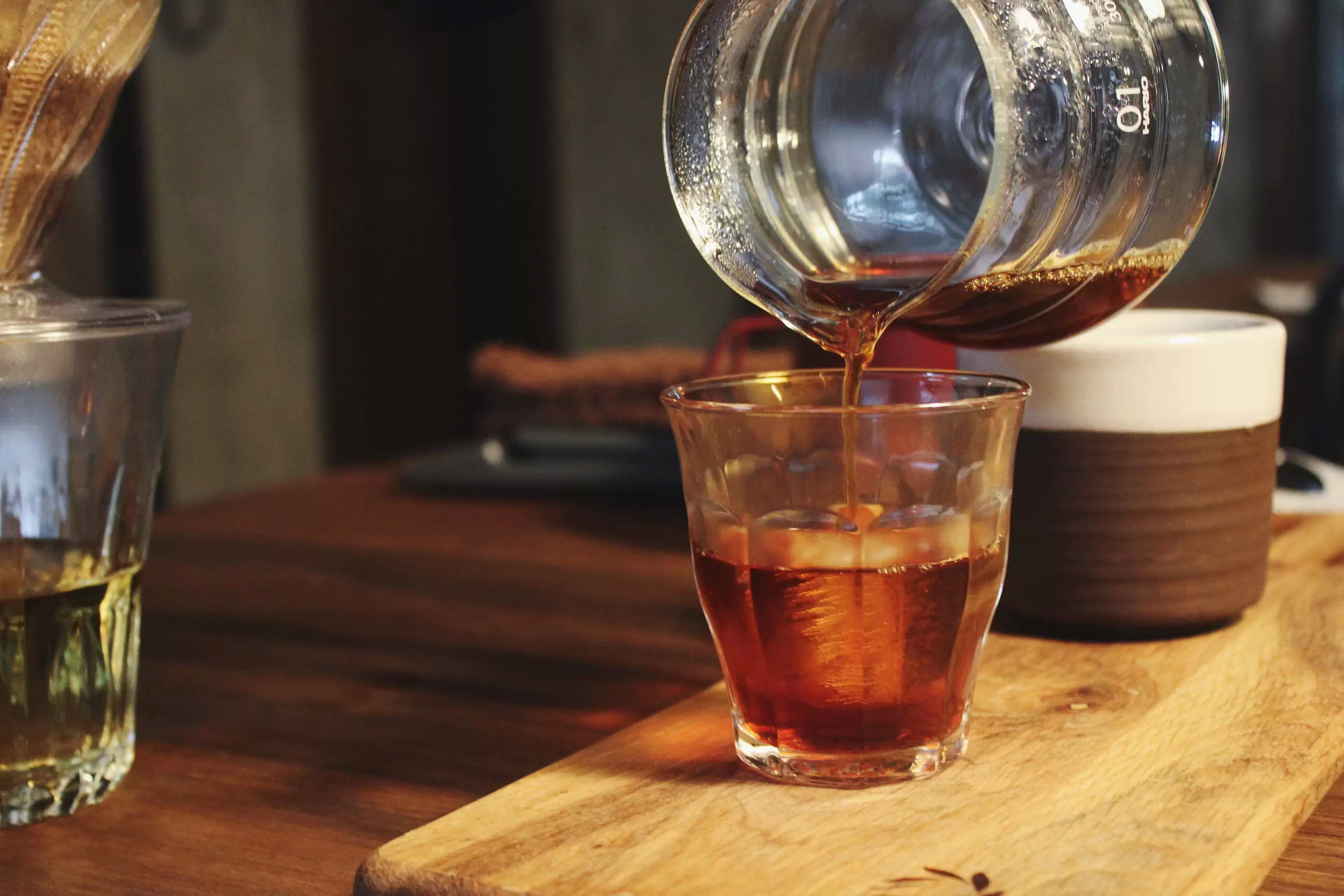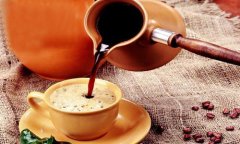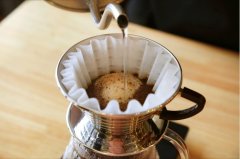What is Espresso? General knowledge of Chinese-style coffee roasting

Chinese steak baking
When we bake deeper and more sugar begins to be carbonized or cut off, it is called medium-style baking, which is usually popular in Florida with this baking degree of espresso. This kind of formula produces slightly darker beans, which tend to taste bitter. However, the baking degree is not deep enough to wipe out all the regional flavor characteristics, and the Chinese formula is mainly a balance of another type, that is, the combination of bitterness, remaining sugar and regional flavor characteristics. Chinese-style espresso will more or less have a bad taste.
The Chinese-style formula is extracted with a less stable boiling water tank (most of the espresso machines on the market are more than 6 degrees Celsius), the espresso of the Chinese-style formula can still be stable, so this type of formula is the most suitable for the average baking retailer, of course, it is also suitable for high-pole bakers. The Chinese-style formula is due to the slight carelessness of the bar staff, and the amount of espresso shed exceeds the standard. at this time, the medium-style coffee still does not show any sour, thin feeling, or taste defects, and will only cause some sweetness of the beans in the Beiyang-style formula. (even if the Chinese-style formula is carefully cooked, the sweetness will not be better than the carefully cooked Beiyang-style formula espresso). In Chinese-style recipes, because the degree of carbonization is slightly higher, and carbon itself is a chemically determined ingredient, no matter what number of machines are used to cook this kind of formula, or if you are not careful when cooking it, you will find bitterness caused by carbonization in the cup anyway.
There is a reason why the baking depth of Italian coffee is getting deeper and deeper to the south. A hypothetical theory is that due to different seasons, residents have a negative effect on the amount of spices used and their preference for taste. Since ancient times, residents in the north had to preserve food and meat because their average food consumption was low. In response to the severe weather in the south, residents had to rely on large amounts of spices to preserve their food. Many anthropologists believe that this has a certain impact on the taste preferences of residents in various regions, and it can also explain why southerners prefer food and ingredients that are more intensive in taste. The application of this theory to coffee explains why southerly coffee tastes so bitter. Of course, these are just theories, which cannot be applied in a pluralistic society like the United States. However, if most of your customers share the southern ethnic group, you may also find that other customers prefer the taste of deep-roasted coffee.
South-style baking
Southern baking is the deepest baking section of espresso beans. In this kind of espresso, bitterness / carbon is the main flavor. With most sweetness and regional flavor characteristics, it is the representative region in Napoli, where you can find the deepest baked espresso in the world, retaining only less sweetness and regional flavor. If you bake deeper, all that's left is probably carbon and bitterness. As the bitterness of espresso at this depth is very strong, it will lose most of the sweetness, but at this time, the flavor persistence is the highest, and the error tolerance rate of cooking is also improved. with a stylized cookie and machine, plus a professional bar counter, this kind of espresso can be done. South Korean baked beans are very suitable for use in small espresso bar or small model coffee shops. You can boil a cup of espresso with strong strength by using any of the machine machines.
When I made Napoli, I drank the espresso here. I saw that the bartender always soaked half an ounce of espresso cups in boiling water. People in this area would add a rub of sugar and swallow it quickly. I deduce a conclusion: southern baking espresso may have to be extracted in a very short time (ristretto), because there is less sugar in coffee beans, and the tradition that has been circulating to this day is to reduce the amount of sugar in order to balance the sugar and bitterness in the cup. Many people think that this baking method, coupled with this cooking method in Napoli, is the most perfect match in the world, but this combination may not be very popular in the United States, because Americans prefer to drink large cups of coffee without bitterness.
The selection of large enterprises vs. The way out for small retailers
The secret of going through a successful gourmet grocery store is to provide a wide range of goods, no matter which branch, the products you get must be very fixed. This secret comes from the retail coffee store, too. As the roasting depth gets deeper and deeper, the sugar in the coffee beans becomes more carbonated. We got a batch of French Roast coffee beans. Why do we call them French Roast? This is because as soon as this kind of coffee beans are extracted, they are added to a large bowl of milk for breakfast. French Roast is the most commonly chosen baking degree in most enterprise-level roasting retailers. With enough milk and sweeteners, this kind of bean sauce that is deeper than southern roasting will taste a bit like a peony (not completely unacceptable), and in most markets, many customers will think that this kind of coffee is a great "strong taste" coffee.
Why do enterprise-level bakers choose French Roast? The reason is simple: it doesn't take much effort to get a good cup of ingredients. In this depth of coffee beans, their regional flavor characteristics, sugar and acid are all lost in the roaster, so there is no need to spend too much effort to pick out the coffee beans, anyway, the taste is the same in the end, in addition, the freshness does not need to be taken into account, because carbon will not change.
I'm not contemptuous of the espresso product of large chain stores. I'm trying to understand how expensive small bakery retailers are in this situation. In order to survive in this industry, you have to let your store have its own unique character, and espresso has to have its own characteristics. These are the requirements for small retail stores to survive, because they all require highly skilled skills.
Only those who spend a lot of time and effort to improve the quality of espresso can afford to survive in today's boutique coffee market. if you can take this as a goal, you are a promoter of coffee culture: the integration of art, depth, and technical food technology!
Baking is a chemical transformation process that produces aromatics, acids, and other flavor compounds to balance the taste, and sometimes roasters amplify the taste, acidity, tartness, or viscosity of some coffee for certain purposes.
The first stage of baking is endothermic, in which raw coffee beans are slowly dried until they change to a slightly dark color, where the roaster tastes like toast or popcorn.
The second stage is usually called the first explosion (first crack). It usually occurs around 205C (400C). In this stage, the size of the coffee bean is twice as large as that of the original. The weight loss of K is about 5%, and the corresponding carbonization number is Agtron 95-90.
The third stage is from the first explosion to the second explosion, the temperature increases from 205C to 220C, the color is moderate brown (Agtron 60-50), and the weight loss is 13%. This chemical process is called pyrolysis, which changes the chemical composition of coffee beans and releases carbon dioxide.
The third stage is the second absorption period, followed by the second release period (exothermic), which is called the second burst (second crack). The second interpretation occurs at about 225C-230C, baking a medium-deep brown color (carbonization number Agtron 50-45). The sound of the second burst is dense and fast, and the surface of the coffee bean will be covered with oil.
The key point of roasting espresso coffee beans is to maximize sweetness and aroma, and to minimize bitterness and acidity at the same time. Most roasters pay too much attention to acid grinding, so very deep-roasted coffee beans can be found on the market. However, over-roasted espresso usually lacks sweetness and aroma, so espresso is imported, which explains why espresso is not popular. On the contrary, coffee products with milk or other sweet-flavored spices are acceptable.
Coffee beans begin the process of caramelization between 170C and 200C, and we are tasting sugar vs. The sweetness of caramel shows that granulated sugar is much sweeter than caramel. In addition, the coloring degree of coffee beans is similar to that of caramelized sucrose, so if you want to maximize sweetness, you must minimize the caramelized degree of sucrose, but you can't bake it too hard. Some compounds that are inherently bitter will never be solved. We recommend that your baking should be stopped between the end of the first explosion and the second explosion, and do not bake for too long. Generally, we recommend that you stop baking at the temperature of about 205-215 degrees Celsius in the baking room, in order to avoid errors in the text description, we provide a reference color bar (see the original network) at the bottom of this box, but all computers, indicators and web users will have chromatic aberration But it can be regarded as an indicator that can be tested. If you need a more sophisticated baking colorimeter, you can send it to SCAA.
Important Notice :
前街咖啡 FrontStreet Coffee has moved to new addredd:
FrontStreet Coffee Address: 315,Donghua East Road,GuangZhou
Tel:020 38364473
- Prev

Arabs drink coffee with more Turkish coffee or Arabian coffee.
Arabs like to drink coffee, this kind of coffee is called Turkish coffee or Arabica coffee, the cup is small, strong, the color is close to black. Usually, they have a drink after dinner or when they entertain guests, and it is a big part of their lives to go to a cafe when they are all right. This kind of coffee is popular in the Middle East, North Africa and Central Europe. Unlike other coffee, Turkish coffee
- Next

The principle of roasting coffee beans the secret of baking coffee beans
The small, high-altitude raw Arabica coffee beans are like a warehouse full of chemicals. At present, scientists have identified more than 2, 000 known ingredients, of which 70 to 850 are aromatic ingredients, which can be called the most fragrant in the human diet. There are only 150 kinds of vanilla used for seasoning in the catering industry, and the mellow composition of wine is also far away.
Related
- Beginners will see the "Coffee pull flower" guide!
- What is the difference between ice blog purified milk and ordinary milk coffee?
- Why is the Philippines the largest producer of crops in Liberia?
- For coffee extraction, should the fine powder be retained?
- How does extracted espresso fill pressed powder? How much strength does it take to press the powder?
- How to make jasmine cold extract coffee? Is the jasmine + latte good?
- Will this little toy really make the coffee taste better? How does Lily Drip affect coffee extraction?
- Will the action of slapping the filter cup also affect coffee extraction?
- What's the difference between powder-to-water ratio and powder-to-liquid ratio?
- What is the Ethiopian local species? What does it have to do with Heirloom native species?

